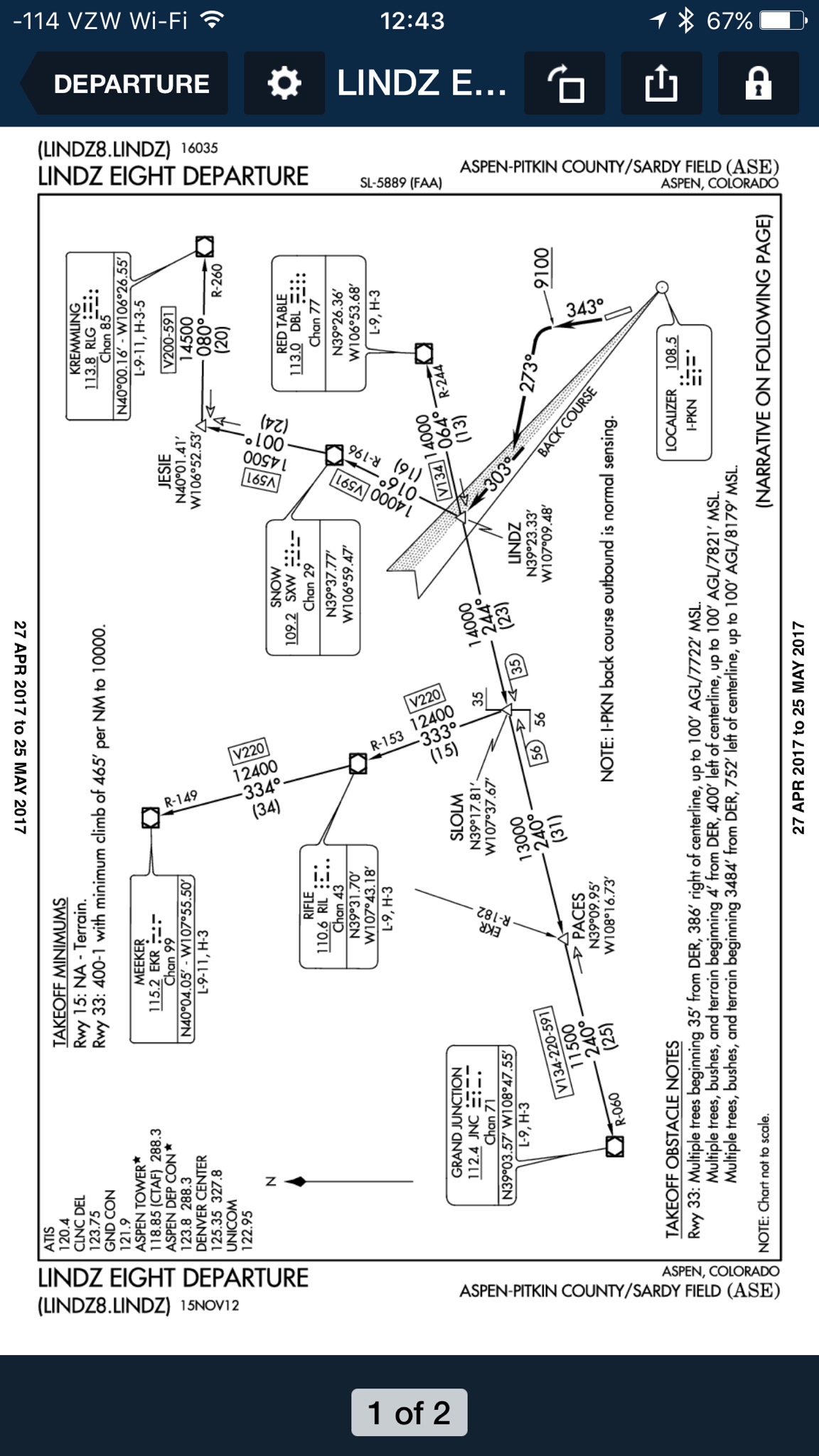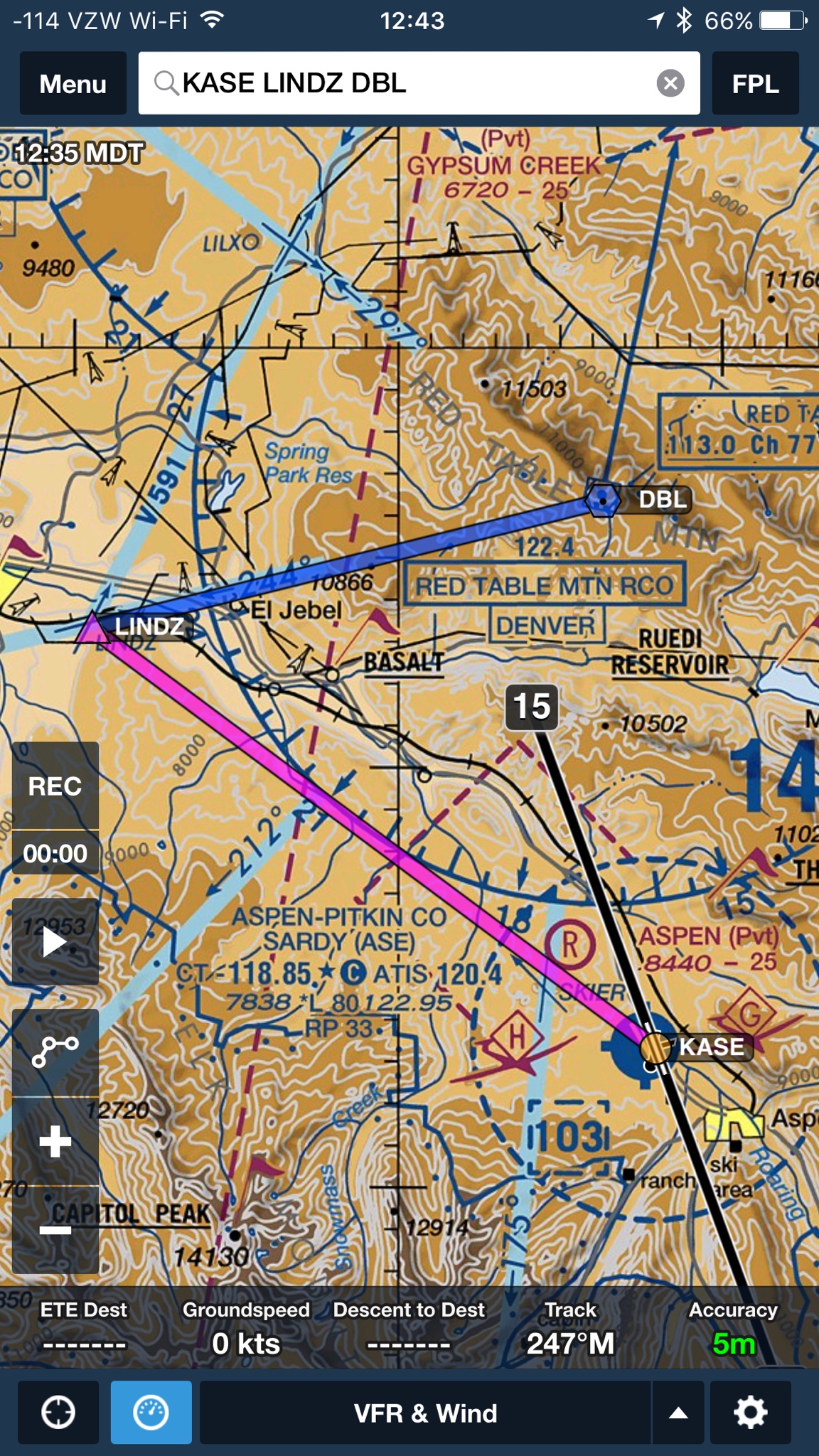denverpilot
Tied Down
Some of Boldmethod's stuff I have made fun of in the past, but this one is kinda fun. Cirrus IFR flight from KASE-KAPA with flyable and mild IMC in the mountains. And... a dead transponder.
Three nitpicks.
1. During the briefing they said they'd maintain "better than 1000 FPM" to mitigate risks and then right at the beginning of the flight, habit takes over and they pull the power back. (Looks like about 650 FPM after that, and they're still below the terrain a bit, but like I say, it's a nitpick. If that comment was added to "sound smart" in post-production about the ADM, the video should have matched what they said they'd do. Don't bother adding it to the video script if not. Just a video production nitpick. Nothing bad about it.)
2. Really it's kinda silly to stay IFR once they're back to the foothills in VMC weather. Just cancel and go on into APA. Just creating a lot of work for the controllers for no real need. But again, a nitpick and I'm fine with it. I suspect they really wanted to stay IFR knowing they'd turn the footage into a video about how to do IFR without a transponder.
3. At one point he says Aspen can't see Primary radar returns because their radar is "broken". It's not. Aspen is served by a Wide Area Multilateralization system that ONLY sees secondary returns in the valley. It's a series of fixed location receivers on vertical antennas spaced around the valley and a single central transmitter that interrogates transponders and then the system times the return time from the aircraft transponder to each fixed receiver, thus triangulating the aircraft location without expensive rotating or oscillating (or even phased array) radar antenna systems and massive cost to have primary radar installed in that mountainous terrain. I've mentioned it before in discussions about how "NexGen" could have been done much much smarter. So no, KASE's radar is not "broken". They simply do not have Primary radar down in the valley. Maintenance and installation costs would have been astronomical whereas WAM is inexpensive and works great. As long as everyone has a transponder.
Mostly sharing for folks who've never flown out here in the rocks. Check out those fun MEAs! Climb, baby, climb. Looks like it was a lovely day for the flight, too.
Looks like it was a lovely day for the flight, too.
Plus @Everskyward might feel a little homesick for KASE if I post this. Hehehe.
Three nitpicks.
1. During the briefing they said they'd maintain "better than 1000 FPM" to mitigate risks and then right at the beginning of the flight, habit takes over and they pull the power back. (Looks like about 650 FPM after that, and they're still below the terrain a bit, but like I say, it's a nitpick. If that comment was added to "sound smart" in post-production about the ADM, the video should have matched what they said they'd do. Don't bother adding it to the video script if not. Just a video production nitpick. Nothing bad about it.)
2. Really it's kinda silly to stay IFR once they're back to the foothills in VMC weather. Just cancel and go on into APA. Just creating a lot of work for the controllers for no real need. But again, a nitpick and I'm fine with it. I suspect they really wanted to stay IFR knowing they'd turn the footage into a video about how to do IFR without a transponder.
3. At one point he says Aspen can't see Primary radar returns because their radar is "broken". It's not. Aspen is served by a Wide Area Multilateralization system that ONLY sees secondary returns in the valley. It's a series of fixed location receivers on vertical antennas spaced around the valley and a single central transmitter that interrogates transponders and then the system times the return time from the aircraft transponder to each fixed receiver, thus triangulating the aircraft location without expensive rotating or oscillating (or even phased array) radar antenna systems and massive cost to have primary radar installed in that mountainous terrain. I've mentioned it before in discussions about how "NexGen" could have been done much much smarter. So no, KASE's radar is not "broken". They simply do not have Primary radar down in the valley. Maintenance and installation costs would have been astronomical whereas WAM is inexpensive and works great. As long as everyone has a transponder.
Mostly sharing for folks who've never flown out here in the rocks. Check out those fun MEAs! Climb, baby, climb.
Plus @Everskyward might feel a little homesick for KASE if I post this. Hehehe.



